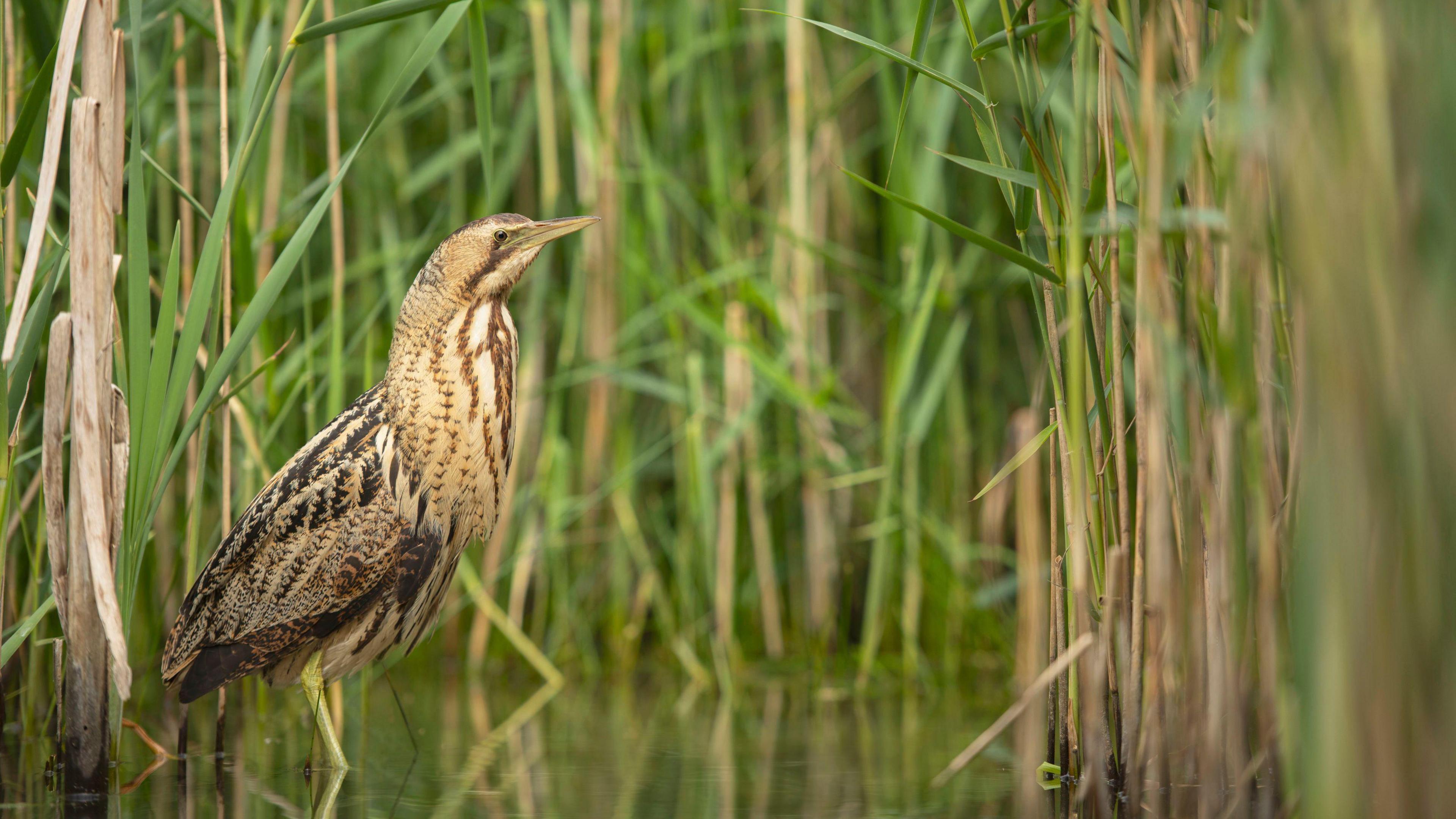Bitterns have record breeding year at reserve
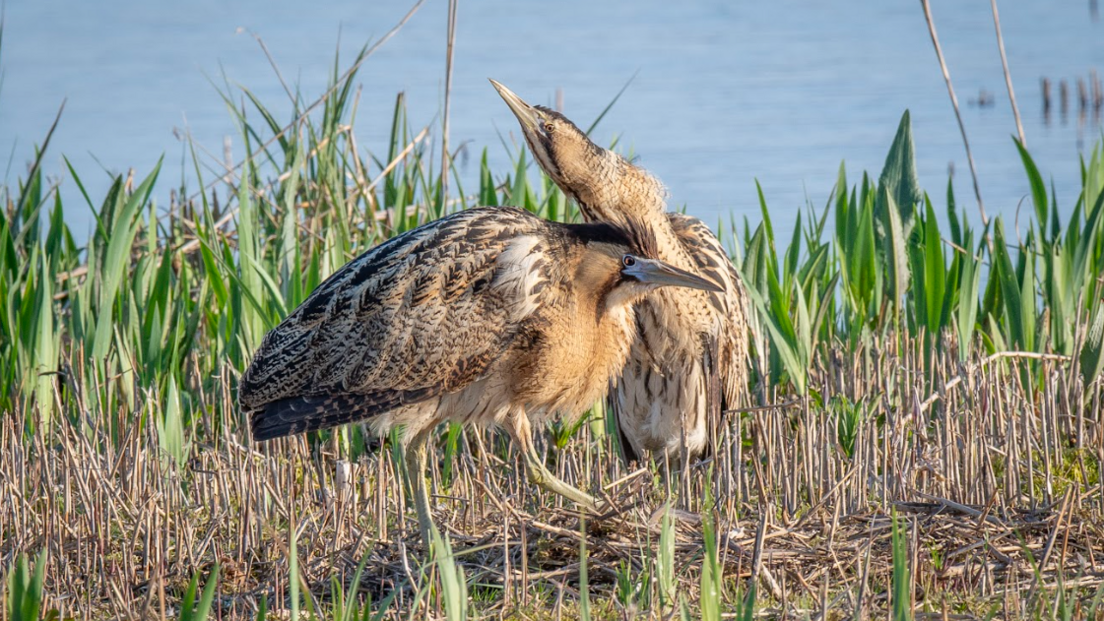
Bitterns, which are part of the heron family, were once extinct in the UK but returned in the 20th Century
- Published
A Staffordshire nature reserve has celebrated a record-breaking breeding season for one of the rarest breeding birds in the UK.
Bitterns, which are part of the heron family, were once extinct in the UK but returned in the 20th Century - although by 1997 there were only 11 males recorded in the country.
However, the RSPB says bitterns have thrived at their Middleton Lakes reserve in Staffordshire this year, with two males and two confirmed nests on the reserve during the summer.
The charity says at least five chicks have now fledged, but due to their "secretive nature", it can be hard to confirm the exact number of fledglings.
Despite the shyness, males are famous for their loud "booming" call which can be heard up to three miles away and is used to attract a mate.
The UK population of booming males in 1997 was restricted to a small number of mainly coastal sites.
Thanks to careful habitat management and protection at places like RSPB Middleton Lakes, the charity has been able to help give bitterns a boost and attract the birds back to the West Midlands.
In 2021, Bitterns successfully bred in the West Midlands for the first time in more than 100 years, raising five young at Middleton.
Since then, Bitterns have "remarkably" bred and fledged from the site each year.
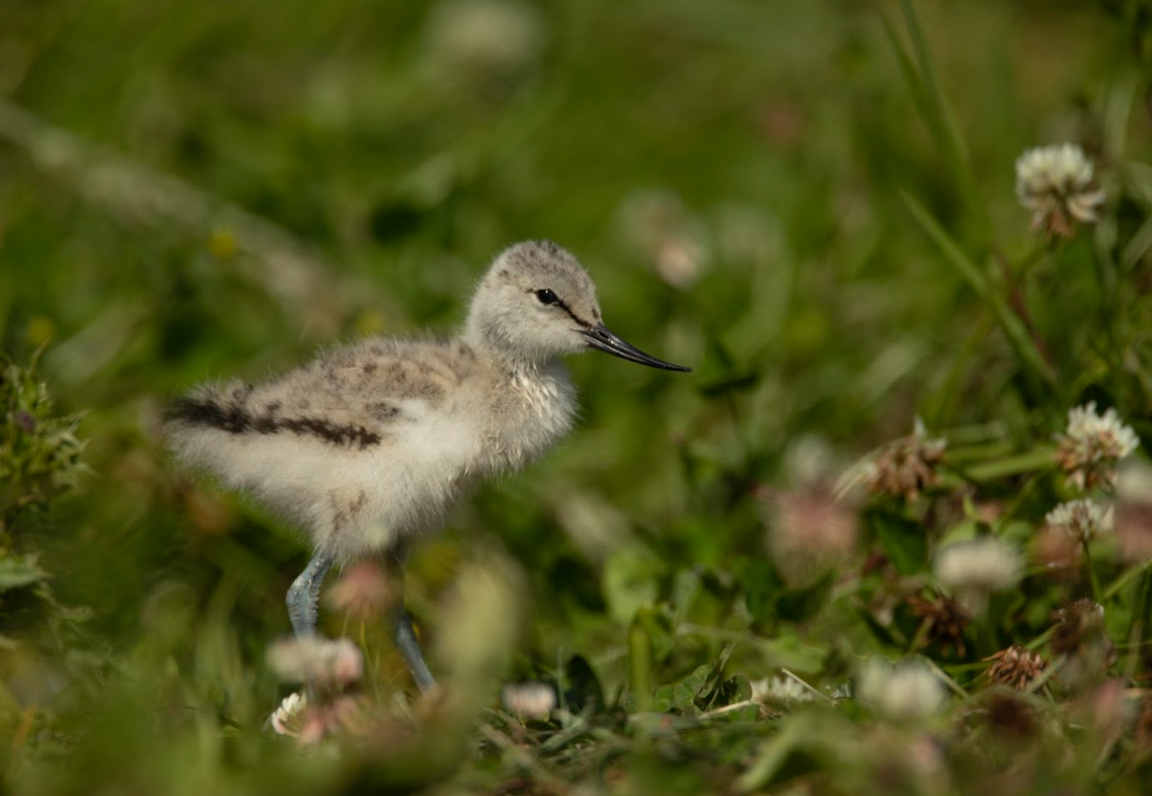
Middleton Lakes has seen 16 avocet chicks fledge this year
Middleton Lakes is also celebrating the numbers of chicks that have fledged this year for some of the UK's "most iconic and threatened" wading birds.
The reserve has seen the highest number of wader chicks fledge since 2022, which the charity claims is down to both RSPB habitat management and favourable weather conditions.
Avocets have seen ten families raise 16 chicks.
Lapwings have also had a strong breeding season, with 11 pairs producing 14 young, alongside other wading bird species seeing chicks fledge too.

What a water wader - avocet numbers have been drawing praise
Kate Thorpe, site manager at RSPB Middleton Lakes, said: "We are thrilled and feel incredibly rewarded to see waders and bitterns thrive this year.
"It shows the importance of making habitats resilient to our changing climate, and how species can bounce back with careful conservation work. We are hopeful for the future of these special birds."
Middleton Lakes was the site of a gravel quarry only a few decades ago, but was transformed into a haven for wildlife when the RSPB took it over in 2007.
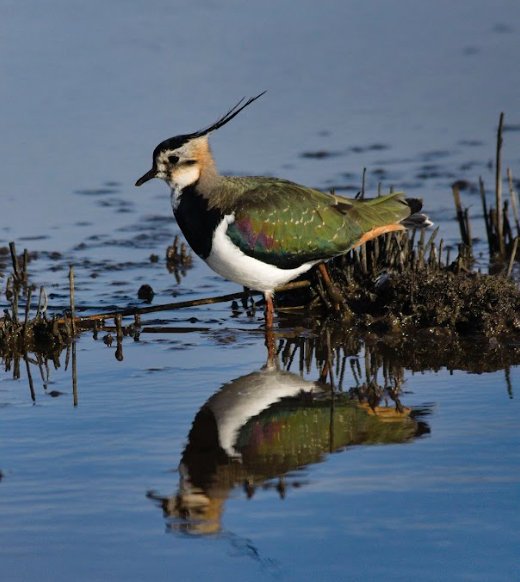
Lapwings have also had a good year at Middleton Lakes
Get in touch
Tell us which stories we should cover in Staffordshire
Follow BBC Stoke & Staffordshire on BBC Sounds, Facebook, external, X, external and Instagram, external.
- Published11 August
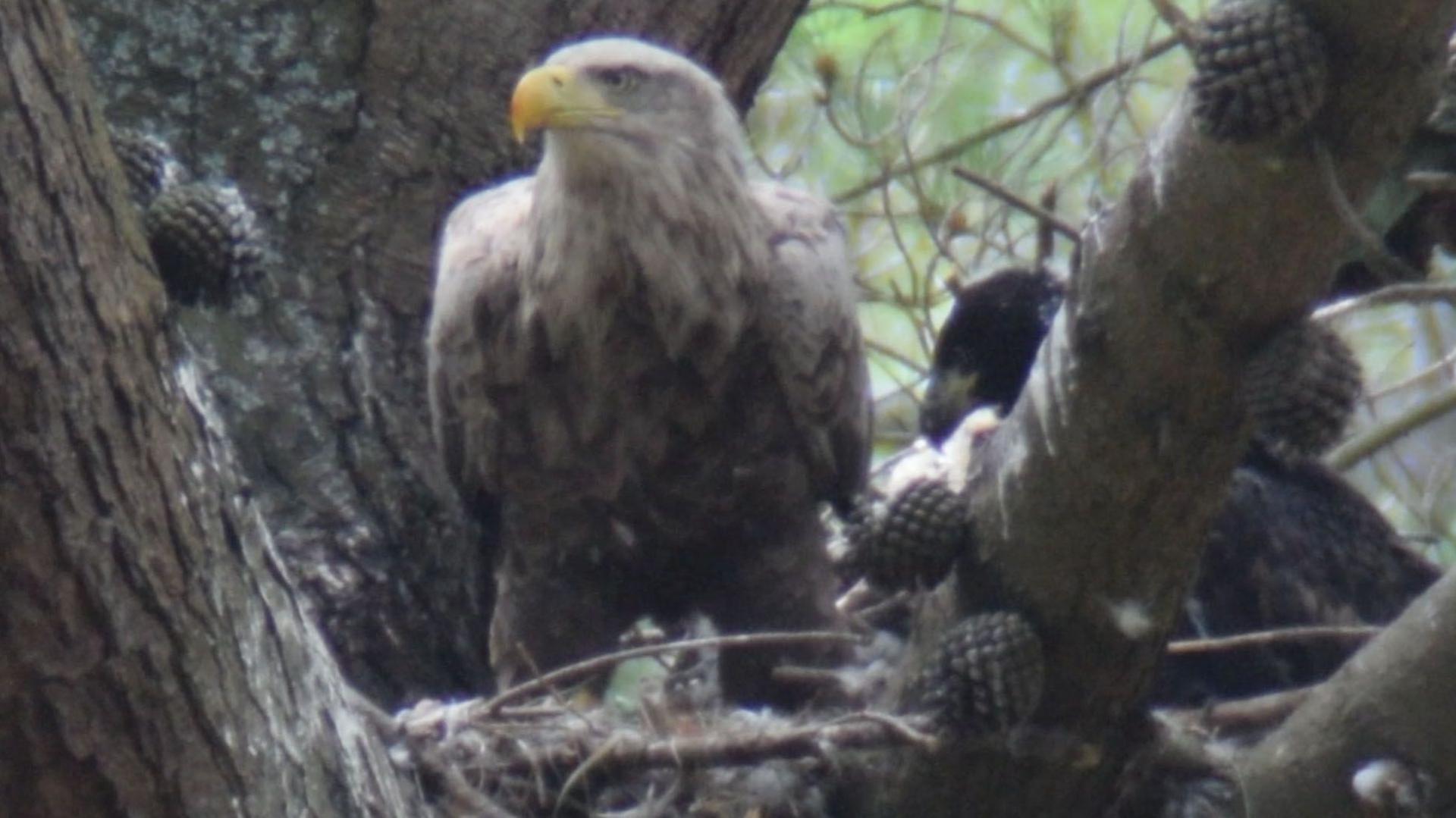
- Published9 August
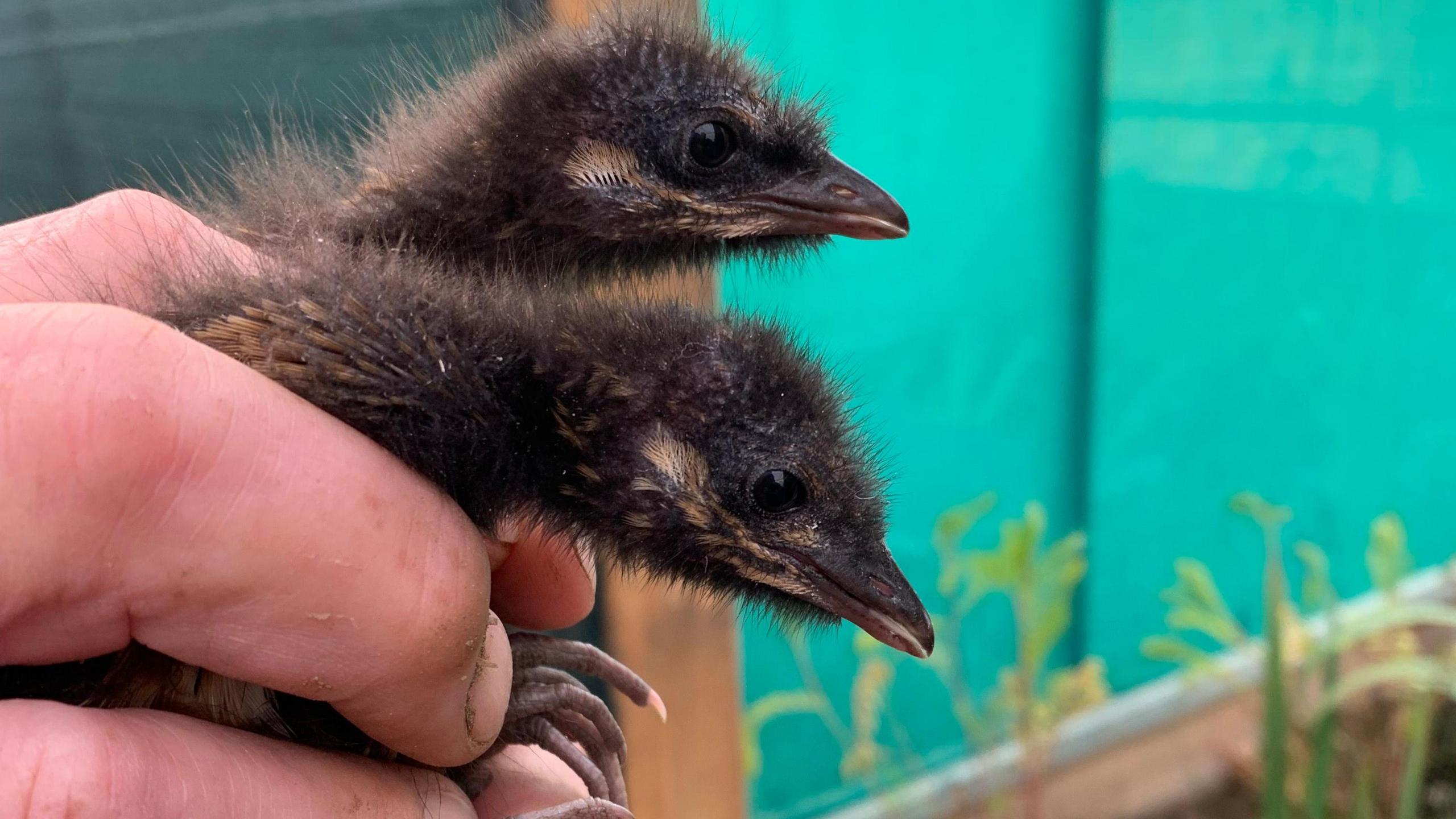
- Published19 March
